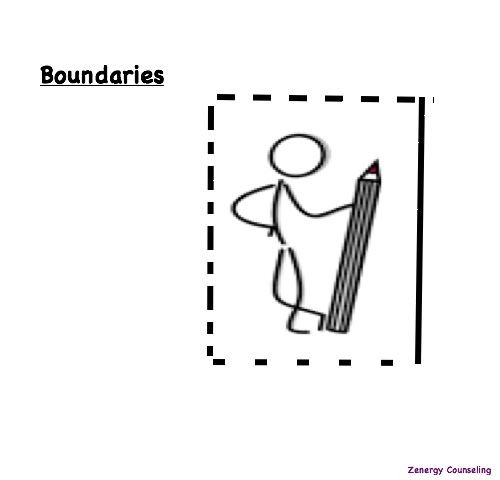Relationships change. Boundaries change.
One of the “problems” with setting boundaries is that sometimes we end up losing relationships that were part of our support system. Our sanctuary changes and it feels uncomfortable — because it’s hard to understand or accept the shifts in those relationships. It is a very painful experience, but a necessary one if you are focusing on a positive future.
Repeat after me: Stop expecting healthy behavior from unhealthy people!
This is not to say that all unhealthy people are unhealthy on purpose. There are individuals who are comfortable with remaining unhealthy and there are others who have convinced themselves that their perspective is IT.
Let’s categorize them and come up with a safety plan for interaction with individuals from each group.
Group 1: Unhealthy-healthy
Individuals in this group actually strive to better themselves. They may be at the best version of themselves at this moment, but still have a lot to work on. Sometimes having a conversation about the issue with them works well– if they are in a place in their life where they are willing to listen.
The unhealthy part may very well be the difficulty they have with mastering their reaction. That’s why I think of them as unhealthy, but healthy. They are willing to do the work, they are still growing– just not quite there yet.
Sometimes it may be difficult to create distance in this relationship because of the potential you see in the person. You see that they are doing their best and may need a bit more support from you or a little more time. I recommend really setting a time frame before you do anything else with them. It’s important that they grow, but not if it will continue to create negativity in your space.
Group 2: The Typical Abuser
You know that perfect person that everyone thinks is just AMAZING, but you know how they really are? You know how they gaslight you and continue to create situations where you end up looking like the jerk? This is the person that you learn about when you are learning about toxic relationships. When you recognize the toxicity, it makes it a bit easier to create some distance but it is the same toxicity that continues to gaslight you into keeping these individuals in your life.
The hard part will be that everyone will believe that this person is pretty near perfect. You may find questioning yourself at times about if you overreacted, but part of you will know that you are making the right decision by walking out of that relationship. The major issue of this group is that they do not believe that they have done anything wrong. Trying to have a conversation with them does not work because, in the end, they are not really going to listen or change. Don’t waste your energy trying to get them to change; use that energy to create a more positive environment for yourself instead.
Group 3: The Aggressive Victim
I personally find this group to be the most difficult to navigate for myself. Individuals in this group appear to believe that they are the victim in the situation. Anything and everything you say is an attack on them and they listen only to point out issues with you. Many times, they may “admit” to an issue, only if it will increase the appearance of victimization for them. The difficulty increases if it is someone you may not be able to walk away from, like family, co-workers, etc.
If this is someone you can walk away from, do it. Distance helps with perspective and allows you to clearly process your experience. BUT if it is someone you are not able to walk away from- for whatever reason- try to keep as much distance as possible. Try to not engage unless it is absolutely necessary. Remember, they listen to find fault in you. This distance will help you with your sanity.
At the end of all this, I want to remind you to “not expect healthy behavior from an unhealthy person.” Don’t set yourself up to be disappointed and ask for something from someone who is incapable of delivering. We have no control over what others do but we take steps to protect ourselves to the best of our ability. Don’t hesitate to seek out assistance from a therapist. They can help you sort out the behaviors and help you create a more individualized safety plan for your own mental health.

